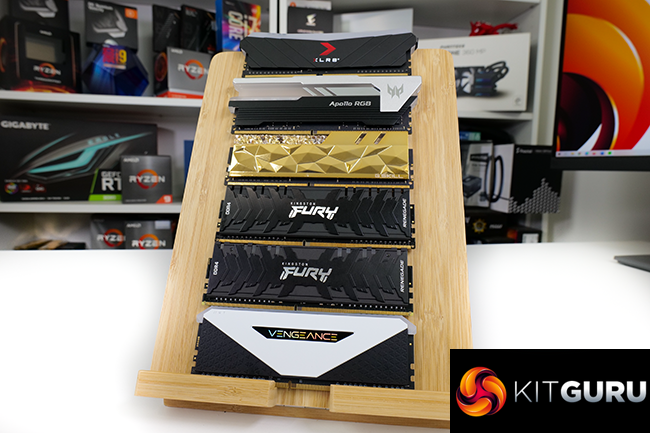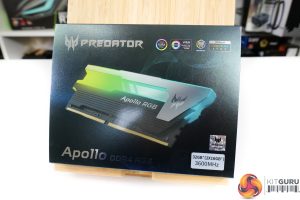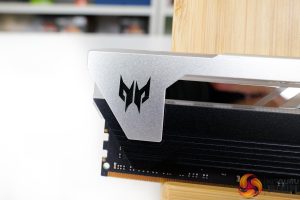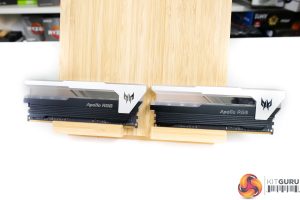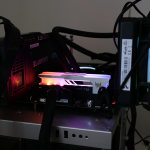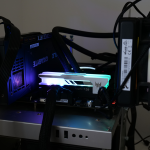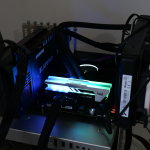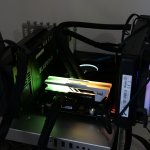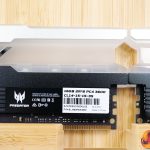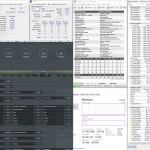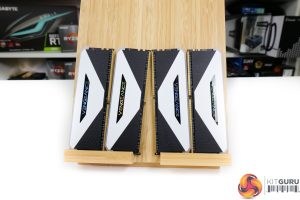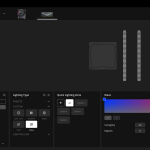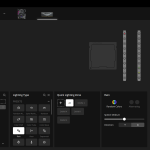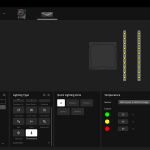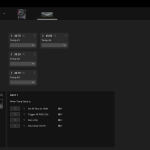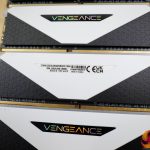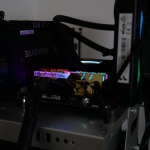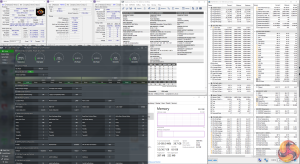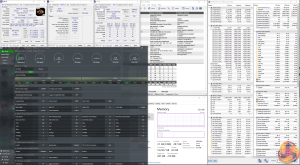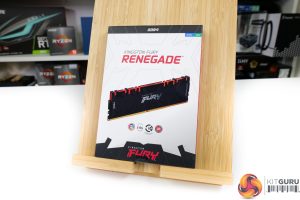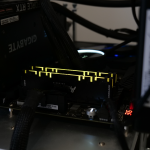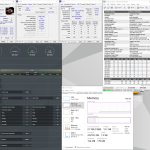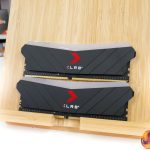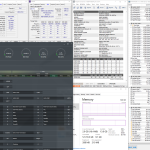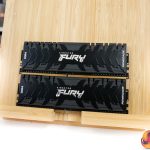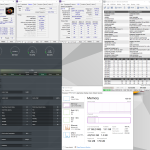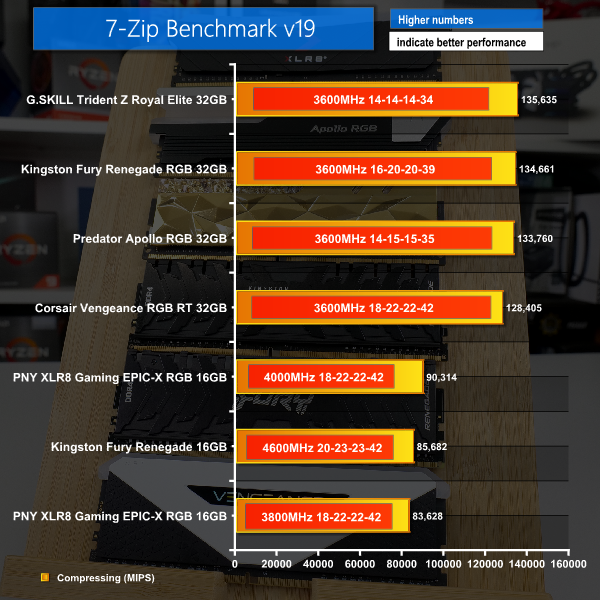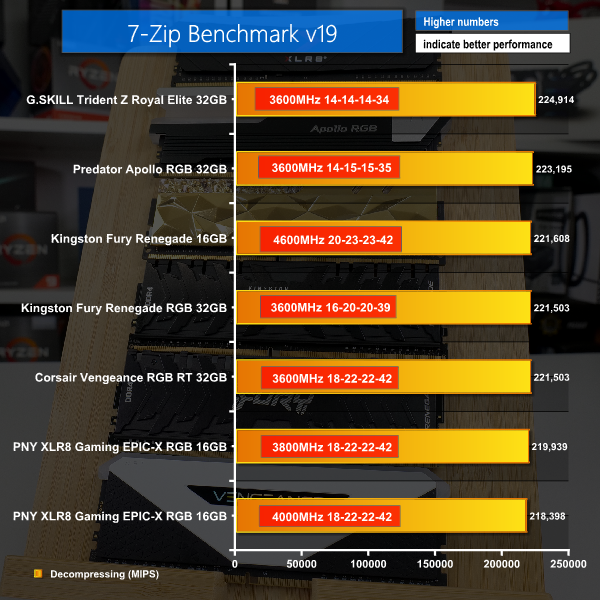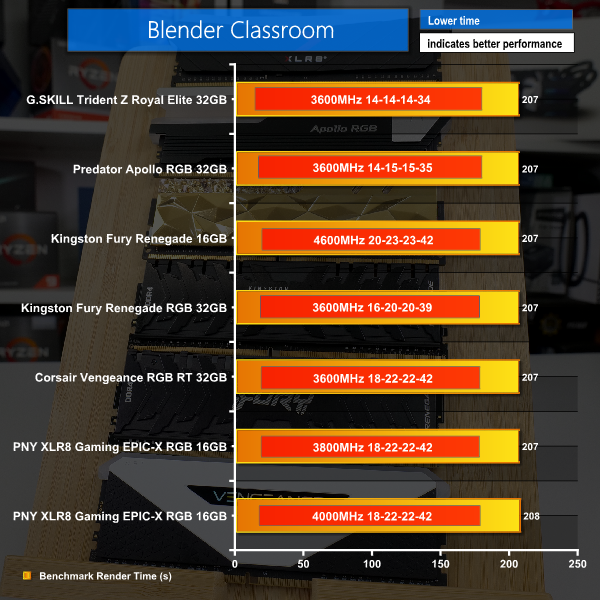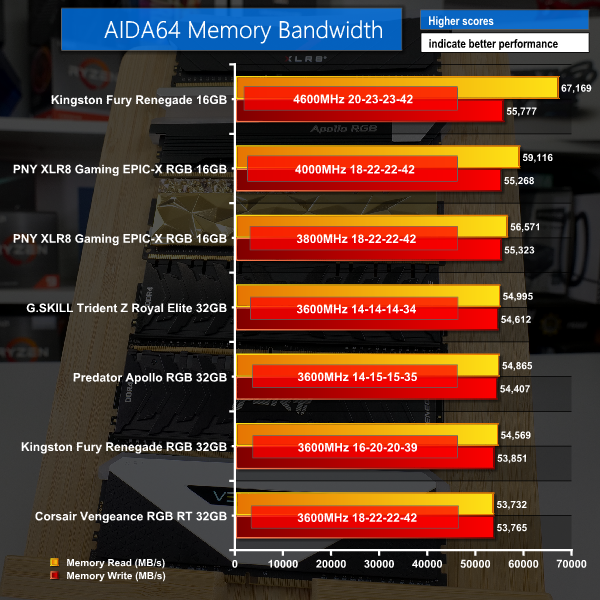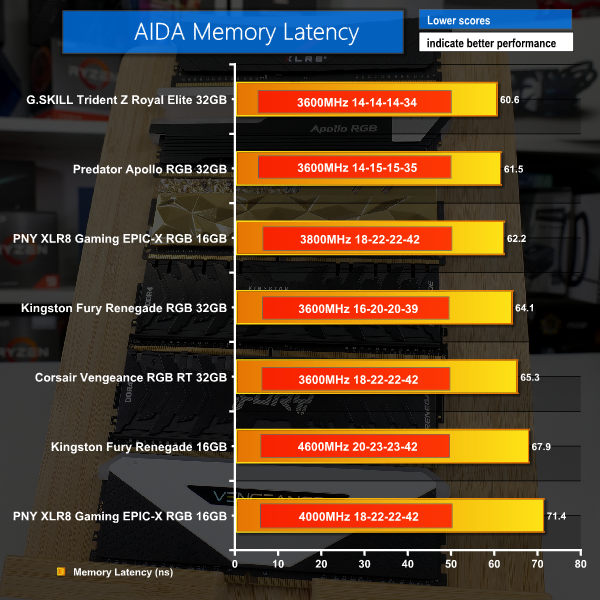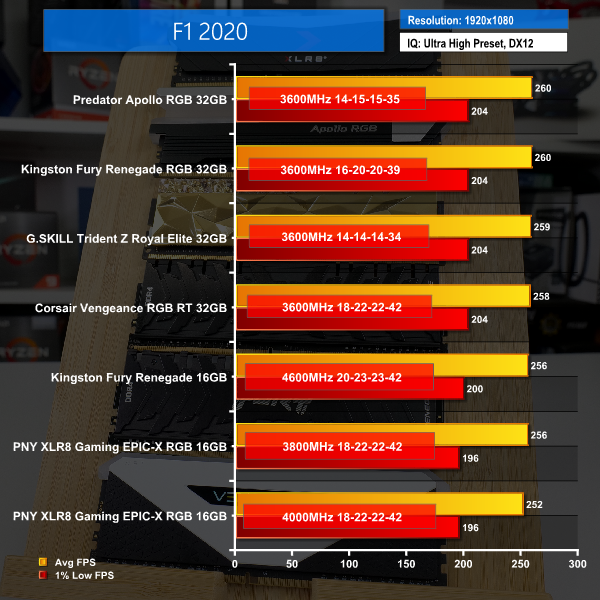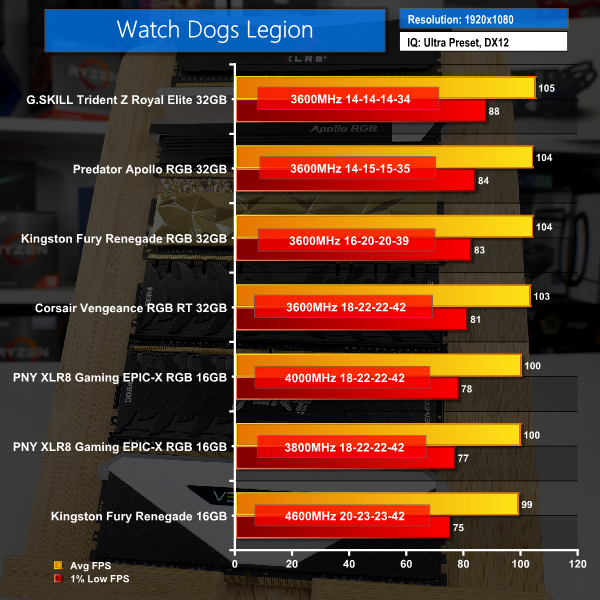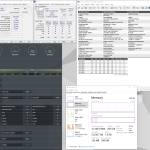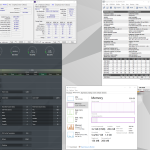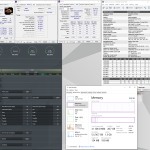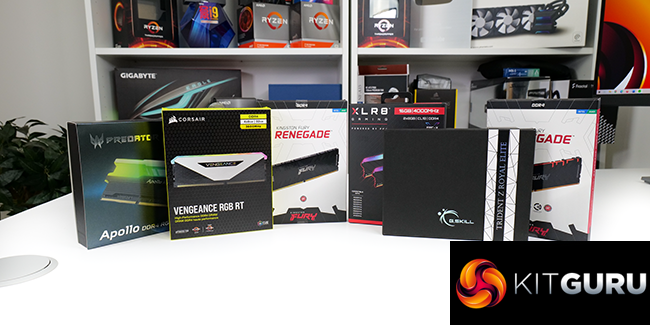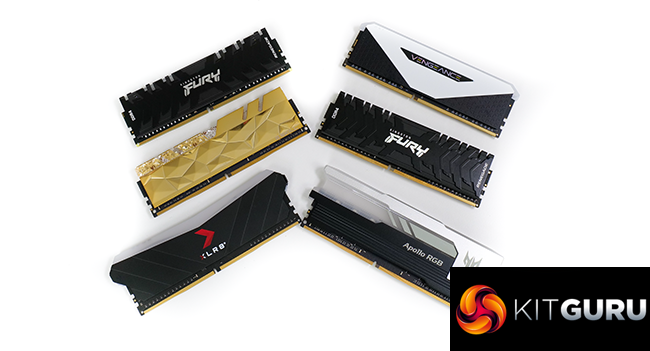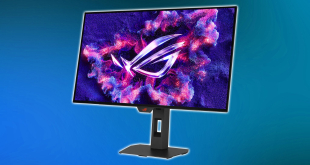With DDR5 just around the corner and ready to steal the limelight, we thought it would be a good opportunity for us to look at a few different DDR4 kits with a variety of different operating specifications. We have mainstream, flashy bling, and uber-high-frequency kits from Corsair, G.SKILL, Kingston, PNY, and Predator.
As is clear, the majority of our samples run at 3600MHz. This has emerged as the new go-to option for DDR4 memory, especially with the beneficial tie-in frequencies on the AMD platform.
We will be testing these sets on our usual go-to AMD Ryzen 9 5950X test system, but also with a keen eye on which kits may perform well as partners for DDR4-equipped Intel 12th Gen Alder Lake motherboards.
Let’s take a closer look…
You may not have heard of the Predator brand modules. These are designed and manufactured by BIWIN Storage Technology company – a Chinese vendor which was founded in 2010. Other products in the company’s modestly sized product stack include SSDs.
The Predator Apollo DDR4 RGB memory kit that we have sampled is impressive in terms of specifications. The rated speed is 3600MHz supporting XMP, timings are 14-15-15-35 at 1.45V, and the 32GB set is 2x16GB DIMMs making them dual-rank.
The Apollo RGB modules use Samsung B-die ICs which are still widely regarded as some of the best options on the market. Not only is B-die performance strong, compatibility with Intel and AMD is also positive.
This should be an excellent option for use with an AMD platform given the 3600MHz speed, tight timings, and dual-rank module basis.
In terms of styling, the Predator Apollo RGB memory modules use a large aluminium heatsink with an RGB diffusion bar atop the 10-layer PCB.
The plastic lighting diffuser is actually larger and covers a greater surface area than many competing modules; I feel that the diffuser does a decent job at spreading light from the underlying LEDs, but it is certainly not particularly smooth.
These RGB LEDs are compatible with the main motherboard vendors’ software for control.
At 51.7mm tall, the kit is excessive and will undoubtedly cause air cooler interference. In fact, the sticks are so tall that we wouldn’t be surprised if interference from roof-mounted radiators or chassis fans is prevalent. This is unnecessary.
Pricing for the kit is $275 USD at Amazon and Newegg. UK price is currently unknown, but expect around £275 based on US pricing. Though, this could be very different given the trade/tariff situation in the US for this Made in China (not Taiwan) memory kit; perhaps some of our US audience can add more local knowledge to that point.
- Model Number: BL.9BWWR.280
- Capacity: 32GB (2x 16GB)
- Rated Frequency: DDR4-3600MHz
- Rated Timings: 14-15-15-35
- Voltage: 1.45V
- Format: Non-ECC Unbuffered 288-pin DIMM
Next we are looking at the Vengeance RGB RT – a new set of the incredibly popular Vengeance-based modules recently released by Corsair.
The rated speed is 3600MHz supporting XMP, timings are 18-22-22-42 at 1.35V, and the 32GB set is 4x8GB making each module single-rank but in a quad-DIMM configuration.
Much to our surprise – given the lax rated timings – these modules in our sample are actually reported as Samsung B-die ICs in Thaiphoon Burner.
But I am absolutely NOT confident in the accuracy of that suggested specification – the timings, performance, and tolerance for overclocking do not stack up to B-die levels. Do not be mistaken into thinking that these are B-die level modules – they are not, based on our testing.
Corsair also includes a module temperature sensor which is nice to see for monitoring geeks like myself.
In terms of styling, Corsair has hit it out of the park once again. We have the RGB RT white version and the contrast between the dark and light areas of the aluminium heatspreaders is very well done in our opinion.
The plastic diffuser pipe does a superb job at smoothing the colour transitions within the ten-zone RGB lighting system. And the LEDs themselves are very bright without being overpowering… thanks again to that diffuser.
As is expected, LED control is managed through Corsair’s own iCUE ecosystem.
This is a superb implementation at this point and has many settings and functions that simply do not exist on competing motherboard vendors suites. Of course, the caveat is that it is another piece of software to install if you don’t already have other Corsair hardware.
At around 45mm tall, Corsair keeps height to a sensible level. These sticks are about the same height as the Vengeance RGB Pro SL sticks and are notably shorter than the original Vengeance RGB Pro modules.
This continued push for sensible height – alongside superb aesthetics – is a design motive that we like from Corsair.
UK pricing according to the Corsair website is £199.99 for our specific test kit, though Scan is a bit cheaper at £186 currently. US pricing is $210 on Newegg.
- Model Number: CMN32GX4M4Z3600C18W
- Capacity: 32GB (4x 8GB)
- Rated Frequency: DDR4-3600MHz
- Rated Timings: 18-22-22-42
- Voltage: 1.35V
- Format: Non-ECC Unbuffered 288-pin DIMM
We looked at G.SKILL’s premium Trident Z Royal RGB memory kit recently and absolutely loved the set. This time, we have the even more enthusiast Trident Z Royal Elite kit in gold and with some differing specifications.
The rated speed is 3600MHz supporting XMP, timings are a tight 14-14-14-34 at 1.45V, and the 32GB set is 2x16GB using dual-rank modules. As we would expect from G.SKILL on the company’s more premium line of memory, the ICs are Samsung B-die.
G.SKILL’s included temperature sensor is a positive given the relatively high operating voltage of 1.45V.
You can check out our previous review for comments on G.SKILL’s superb Trident Z Royal styling.
The Elite modules take the aesthetic design up a notch by swapping out the flat aluminium heatspreader for a ridged design sporting several triangles. The visual appearance is certainly unique, even if the improvements to heat exchange are unlikely to be significant.
And of course, that crystalline RGB light diffuser is still present alongside the 8-zone RGB lighting. This helps the Trident Z Royal (Elite) modules to continue to lead the market in terms of RGB LED quality and styling in our opinions. Though Corsair may have something to say there with their Capellix LED Dominator Platinum sticks.
RGB control via the main motherboard vendor software suites is present, as well as Razer Chroma. G.SKILL also has compatibility through its own tool.
At around 44mm tall, G.SKILL’s height is sensible. Not only do you get a smart heatspreader and attractive aesthetics, but a market-leading level of RGB light bar is fit inside this 44mm height.
Take note competing manufacturers; this is how you design sensibly sized modules that do not lack aesthetic quality.
US pricing on Newegg is $370. As always for the UK, G.SKILL availability is pretty much non-existent. Though we expect the UK price to be around 1:1 with USD pricing anyway, so probably around £370 or so… if you can find stock.
- Model Number: F4-3600C14D-32GTEGA
- Capacity: 32GB (2x 16GB)
- Rated Frequency: DDR4-3600MHz
- Rated Timings: 14-14-14-34
- Voltage: 1.45V
- Format: Non-ECC Unbuffered 288-pin DIMM
Recently released, the Fury Renegade RGB modules from Kingston represent the company’s latest foray into the high-end memory module market. A variety of capacities and specifications are available in RGB and non-RGB form.
The kit we have is rated at 3600MHz supporting XMP, timings are 16-20-20-39 at 1.35V, and the 32GB set is 2x16GB using dual-rank modules. The underlying ICs are Hynix DJR.
Another useful point is that Kingston includes a backup 3000MHz C15 XMP setting in case you have issues at 3600MHz.
Kingston’s module styling is far less in-your-face or bling than the competing modules we have seen thus far. And that’s a positive change of tone in my opinion, that will certainly appeal to many.
The two-tone black and grey aluminium heatspreader is a multi-height design that looks cool without any LED lighting. Kingston does a very good job at hiding the plastic RGB lighting diffusion bar with the use of the wrap-around aluminium heatspreader.
In terms of lighting, the consistency and smoothness from the five-zone LED system is good, thanks to that diffusion bar. There are sections where the LED light cannot shine through the wrap-around aluminium heatspreaders, but I can see how these may be appreciated by some users as a more ‘industrial’ style.
The LED lighting can be synchronised using motherboard vendor software, and you get Kingston’s Infrared Sync Technology by default.
You can also use Kingston’s Fury CTRL software if you want a little more fine-tuned control of the lighting. Too bad you have to download this tool through Windows store instead of directly from the webpage. Seriously Kingston?!?! The Windows Store, not your own website!?!?
At around 42mm tall, Kingston’s sticks are certainly modest by modern standards. That’s a positive for users with an air CPU cooler.
UK pricing is around £200 on Amazon, but £152 on the Kingston store. So, take your pick there for available pricing – but the latter does indeed seem legit.
US pricing is around $195 on Newegg.
- Model Number: KF436C16RB1AK2/32
- Capacity: 32GB (2x 16GB)
- Rated Frequency: DDR4-3600MHz
- Rated Timings: 16-20-20-39
- Voltage: 1.35V
- Format: Non-ECC Unbuffered 288-pin DIMM
Another set of Kingston Fury Renegade memory, but this time we have a non-RGB kit that focusses purely on performance instead of flashy lights.
The kit we have is rated at an eye-watering 5333MHz supporting XMP, timings are 20-30-30-52 at 1.60V, and the 16GB set is 2x8GB using single-rank modules. The underlying ICs are Hynix DJR which are clearly overclocked to extremes.
This time, the backup XMP setting is for 4000MHz 19-23-23-42 at 1.35V, which is a very commendable specification in its own right. In fact, the backup XMP configuration is perhaps more impressive than the main 5.33GHz version when factoring the balance between frequency, timings, and voltage.
Put simply, Kingston appears to have delivered a DDR4 kit with DDR5-level specifications. And that could be very cool indeed, if you have the relevant use case… and a capable motherboard!
Kingston’s module styling is practically identical between the RGB and non-RGB set, with the exception of the plastic light diffusion bar of course. You still get the silver/white Kingston Fury and Renegade DDR4 writing on the aluminium sheets.
In place of the removed plastic light bar is additional aluminium heatsink that feels solid and should add notable performance to the module’s cooling capacity. And that may well be useful given the incredibly high operating voltage of 1.6V under high-speed XMP conditions.
Module height is still around 42mm tall, so this does indeed appear to be a straight swap of design. RGB light diffusion bar out, extra aluminium heatspreader in.
UK pricing is £475 on the Kingston store and availability seems poor elsewhere. US pricing is $603 through a Newegg third party seller.
- Model Number: KF453C20RBK2/16
- Capacity: 16GB (2x 8GB)
- Rated Frequency: DDR4-5333MHz
- Rated Timings: 20-30-30-52
- Voltage: 1.60V
- Format: Non-ECC Unbuffered 288-pin DIMM
PNY’s competitor comes in the form of the company’s XLR8 Gaming EPIC-X RGB kit. A variety of capacities and specifications are available.
The kit we have is rated for 4000MHz supporting XMP, timings are 18-22-22-42 at 1.35V, and the 16GB set is 2x8GB using single-rank modules.
Those timings are actually pretty reasonable for a 4GHz kit, especially when the modest 1.35V rating is factored in.
The underlying ICs are Hynix-based but we could not validate the exact part number using Thaiphoon Burner.
PNY uses a conventional RGB memory module design; a large plastic light diffusion bar sits on top of a black aluminium heatspreader.
The heatspreader is not entirely black as PNY includes some red colouring for the branding. That feels out of place in my opinion, especially to somebody who may not want red with their build theme.
The plastic lighting diffuser aims to smooth the transition between the five RGB LEDs, but it is quite clear at first look that the light bar is not doing a good job. The individual LEDs are clearly visible, and there is obvious fade as you move between the zones of each RGB light.
This is certainly one of the poorer RGB memory module efforts that I have seen and perhaps indicates that PNY is targeting an aggressive price point. These RGB LEDs are compatible with the main motherboard vendors’ software for control.
At around 48mm maximum height, albeit in a slanting design, PNY’s height is not particularly accommodating for users with air CPU coolers. In fact, the slanting design means that the tallest parts of the modules are at each outer edge. Disappointingly, this brings roof-mounted AIO and chassis fan interference into the equation.
UK pricing is £108 on Amazon. US pricing is $158.99 on Newegg or $119.99 on Amazon.
- Model Number: MD16GK2D4400018XRGB
- Capacity: 16GB (2x 8GB)
- Rated Frequency: DDR4-4000MHz
- Rated Timings: 18-22-22-42
- Voltage: 1.35V
- Format: Non-ECC Unbuffered 288-pin DIMM
We will be outlining the DDR4 memory kits' performance with the AMD Ryzen 9 5950X CPU, ASUS ROG Crosshair VIII Hero motherboard, and a Gigabyte RTX 3080 Eagle OC graphics card. The processor is overclocked to a static 4.6GHz to take any clock speed variability from Precision Boost 2 out of the performance equation.
By default on AMD, 4000MHz memory will deliver a 2000MHz memory clock and therefore a 1000MHz memory controller clock due to the 2:1 divider. In fact, any memory speed beyond 3600MHz will drop the memory controller clock to a 2:1 divider without manual intervention.
If, however, we can get the Infinity Fabric clock to match the memory clock, we can also run the memory controller clock at the same speed and remove the 2:1 divider latency penalty. Unfortunately, our 5950X doesn’t want to seem to go higher than 1900 MHz for the Fabric Clock.
This means that we have two test procedures for 4GHz kits in particular:
- We test the kit at stock 4000MHz XMP with the Ryzen system running without adjustment beyond a 4.6GHz CPU OC. This results in 1800MHz Fabric clock, 2000MHz memory clock, and 1000MHz memory controller clock.
- We also test with the memory running alongside a CPU configuration better tuned for high speed memory. This is 1900MHz Fabric clock, 1900MHz memory clock, and 1900MHz memory controller clock. Here, the memory was running at DDR4-3800MHz speeds.
The 5333MHz Kingston kit is simply too fast to apply such workarounds. We have yet to see an AMD motherboard that highlights memory speeds as high as 5333MHz on the QVL, and even Intel boards that will support 5333MHz are few and far between.
The best stable memory speed that we could achieve on our ASUS ROG Crosshair VIII Hero test motherboard was 4600MHz. This was not a reflection of the Kingston memory kit, but instead highlights some downsides of the AMD platform with respect to high-speed memory.
Given that 4600MHz is well below the 5333MHz rated frequency, we instead opted for the tighter timings of the secondary XMP profile. This had us running the kit at 4600MHz 20-23-23-42 at 1.60V. That is actually a hefty overclock in terms of timings, so it will be interesting to see how this plays out.
We know that testing this set on our go-to AMD platform is not ideal, but we will keep an eye on these sticks when it comes to testing Intel’s 12th Gen Alder Lake CPUs on DDR4-capable motherboards. That could certainly make for some interesting testing to see if uber-high-speed DDR4 in single-rank configuration can outperform more modest frequency dual-rank kits.
Test System:
- Processor: AMD Ryzen 9 5950X overclocked to 4.6GHz all core.
- Motherboard: ASUS ROG Crosshair VIII Hero.
- Graphics Card: Gigabyte RTX 3080 Eagle OC.
- System Drive: WD_Black SN750 SSD.
- CPU Cooler: Fractal Celsius+ S28 Prisma 280mm AIO.
- Power Supply: Seasonic Prime TX-1000 1000W.
- Case: Lian Li Open-air Test Bench.
- Operating System: Windows 10 Pro 64-bit.
Tests:
- 7-Zip – Built-in 7-Zip benchmark test (CPU & Memory)
- Cinebench R23 – All-core CPU benchmark (CPU & Memory)
- Blender 2.93.4 – All-core rendering of the Classroom benchmark (CPU & Memory)
- SiSoft Sandra – Memory bandwidth (Memory)
- AIDA64 – Memory bandwidth, memory latency (Memory)
- 3DMark TimeSpy – Time Spy (1440p) test (Gaming)
- F1 2020 – 1920 x 1080, Ultra High quality preset, DX12 version (Gaming)
- Watch Dogs Legion – 1920 x 1080, Ultra quality preset, DX12 version (Gaming)
Compute and Productivity Tests
For 7-Zip compression workloads, G.SKILL’s ultra-tight 3600MHz dual-rank kit rules the roost on our AMD test platform. It’s tight at the top, though, with the slightly looser Predator and Kingston 2x16GB kits also fairing very well. Slack timings for a 3600MHz clock speed demote the Corsair set a little behind the rest of the 3.6GHz dual-rank pack.
Propping up the chart are the single-rank 16GB sets. Even higher RAM frequencies and/or enhanced Infinity Fabric clock speeds cannot offset the benefit of dual-rank module performance on the AMD test platform in this benchmark. Interestingly, Kingston’s uber-fast Renegade set running at 4600MHz did not seem to take too kindly to this benchmark, as was shown by higher performance from the more sensibly clocked PNY kit.
Decompression margins are clearly tighter, and this time frequency does play a role in rankings as shown by the strong performance from the Kingston set running at 4.6GHz DRAM frequency.
G.SKILL still tops the chart here thanks to tight timings and the preferential 3600MHz clock for the AMD platform. And we still see the sensibly-clocked, single-rank kit from PNY propping up the table, despite one configuration running with a 1900MHz FCLK.
There really is not much to tell apart these kits in Blender. That is due to the sheer level of focus put on the CPU in this tile-based rendering workload.
PNY’s single-rank kit with less preferential memory controller clocks for the AMD CPU bottoms the chart by a tiny margin. But the rest of the kits are practically the same for our test run.
Cinebench paints a similar picture, which is unsurprising given that it is also a tile-based rendering piece of software. There is very little difference between the performance of the 3600MHz dual-rank kits, though G.SKILL does fall back a little for some reason.
Kingston’s uber-clocked Renegade kit once again puts in a good performance show here. And we continue to see the 4000MHz PNY set at the bottom of the chart when its CPU-tied Memory controller clock is not optimised.
Memory Benchmarks
AIDA memory bandwidth performance is where the ultra-fast Kingston kit really shows its value. This chart is essentially a pure reading of the kits in terms of combined frequency and timings hierarchy.
The Sandra memory bandwidth test does not follow the same rules. Instead, normal order is resumed, and the dual-rank kits dominate the chart’s upper echelon.
The AIDA Latency test is a bit of a mix between the previous two. This time, we see dual-rank kits showing beneficial performance, but memory frequency and timings are also valued. G.SKILL and Predator top the chart at 3600MHz CL14. But the single-rank PNY kit at 3800MHz with preferential tie-in CPU frequencies does well.
Gaming Tests
3DMark Time Spy does particularly well on the Samsung B-die based G.SKILL and Predator kits with their 3600MHz dual-rank operating configurations and tight – CL14 timings. The looser timings of Corsair’s Samsung kit drop its performance below the tighter Kingston’s Hynix-based Fury Renegade RGB set by a slim margin.
Once again, we see the performance segregation between single-rank and dual-rank sets on the AMD platform. Even with the FCLK ramped up to 1900MHz, the 2x8GB PNY XLR8 Gaming EPIC-X RGB set cannot compete with the 32GB competitors. We see less preferential behaviour from the uber-fast Kingston Fury Renegade kit running at 4600MHz here, albeit by a small margin versus the PNY set that also has a CPU memory controller clock deficit.
The 32GB 3600MHz kits steam to the top of our chart in F1 2020. Predator technically leads Kingston by a tiny margin that doesn’t show up due to rounding. But realistically, these top 4 kits are practically the same in terms of performance.
Kingston’s ultra-fast Fury Renegade kit leads the single-rank pack, but these kits are a few FPS behind in terms of average and 1% low numbers. The 4GHz PNY set is sat at the bottom, once again due to its less preferential CPU memory controller clock speed link.
And as is zero surprise to anybody at this point, the higher-density 3600MHz kits once again take top spot for Watch Dogs Legion.
This time, G.SKILL is measurably quicker thanks to its tight timings and Samsung B-die ICs. The slightly looser Predator kit practically trades blows with the Hynix-based Kingston RGB set – which continues to put in good performance showings throughout our testing.
And the single-rank 16GB sets are once again a segregation behind in terms of FPS. This time, however, the performance numbers were less favourable to the uber-fast Kingston Fury Renegade set that also wields looser timings.
If you can only afford a cheap single-rank kit, you won’t lose too much performance. But beyond a certain frequency, gaming seems to favour dual-rank kits instead on the AMD platform.
Overclocking will understandably be very much dependent upon luck of the draw with your individual kit. As such, we don’t assign too much weight to the overclocking results that we see with a sample size of one. There’s no harm in a quick tinker though.
For the PNY and Kingston 5333MHz kits, we had already messed with their settings, so we will instead focus on overclocking of the 32GB 3600MHz kits.
Corsair Vengeance RGB RT
For the Corsair Vengeance RGB RT set, we pushed the kit up to 3800MHz with its stock timings using 1.45V. Unfortunately, tightening the timings to 18-18-18-38 at 3600MHz was not possible.
G.SKILL Trident Z Royal Elite
G.SKILL’s Trident Z Royal Elite managed to increase its frequency to 3800MHz with the stock timings and default 1.45V voltage applied.
Predator Apollo RGB DDR4
The Predator Apollo kit also pushed to 3800MHz at stock 14-15-15 timings and the usual 1.45V.
Kingston Fury Renegade RGB
Kingston’s Fury Renegade RGB kit increased to 3800MHz and stock timings using 1.45V. But the timings would not tighten further at 3800MHz when we tried 16-18-18-38.
To summarise, we saw a little bit of headroom from each of these 32GB kits. That smidgen of headroom was enough to push to 3800MHz, which is the frequency that our chip can manage for a 1900MHz Infinity Fabric Clock.
There we have a decent summary of a few different kits that we had in for review on our AMD test platform. The key takeaway really does reaffirm what we already anticipated and kind-of knew; dual-rank 32GB 3600MHz sets of memory – preferably with tight timings – perform very well on the AMD platform.
Single-rank 16GB kits continue to serve their purpose from a value perspective, as shown by the PNY XLR8 Gaming EPIC-X RGB set. That’s especially true if you pick a kit that sticks below around 3800MHz so that you do not have to penalise your system by dropping the CPU’s memory controller frequency.
Throughout testing, we really did struggle to see the mindset for using the uber-clocked Kingston Fury Renegade set, even when running at a ludicrous 4600MHz with reasonable timings – which was the best our X570 motherboard could handle.
This looks to be a set of memory better intended for the Intel platform or perhaps some specific synthetic benchmarking records, especially as it is a DDR4 kit offering DDR5 speeds. So we will keep an eye on this set for use with Intel’s upcoming 12th Gen Alder Lake CPUs, as that could deliver an interesting comparison between DDR4 and DDR5 at roughly equivalent memory clocks.
To close out, it is good to see a premium kit from Predator that has the ability to compete against G.SKILL’s ultra-premium Trident Z Royal Elite set in terms of performance. The G.SKILL kit is still the best truly high-end option from this round-up’s participants in our opinion, especially as the overall design is smarter and more relevant. But UK availability continues to be dire, and the suggested pricing is incredibly steep.
The more reasonably priced Corsair and Kingston 32GB 3600MHz sets are what we’d lean towards for a more sensible build. The Corsair Vengeance RGB RT kit offers a very well-finished product at a sensible price, but the stock timings are loose and this does hurt performance on occasions when combined with the lesser performing Samsung (probably not B-die) memory ICs.
Kingston’s Fury Renegade RGB impressed us overall. It was rarely the very fastest set in the chart, but the Hynix-based modules performed well, the operating voltage was sensible, and the RGB implementation is a bit different to many of the competitors. Couple the strong UK pricing, and this does look like a stellar option.
Our overall feeling towards the PNY XLR8 Gaming EPIC-X RGB 16GB 4000MHz kit is that it is simply OK. Performance is OK, aside from the instances where the AMD platform penalises 4000MHz memory. The RGB implementation is not very good and certainly leaves a lot to be desired. But the price tag of a little under £110 in the UK is very competitive versus other 4GHz RGB modules, so I guess that’s where the value argument lies.
This has been an interesting look at some different memory kits, their designs, and then the performance for varying DDR4 specifications on the AMD platform. If you want to see something similar for the upcoming Intel platform with DDR4 and DDR5 compatibility, be sure to let us know in the comment section down below.
Discuss on our Facebook page HERE.
Predator Apollo RGB DDR4
Pros:
- Strong performance
- Optimal frequency and timings
- Good lighting design
- Excellent build quality
Cons:
- Excessively tall
KitGuru says: The Predator Apollo RGB DDR4 kit offers strong performance alongside a stellar lighting display.
Corsair Vengeance RGB RT
Pros:
- Excellent aesthetic design
- Sensible heatsink size and construction
- Superb lightbar implementation
- Temperature sensor is useful
- Great iCUE coordination
Cons:
- Performance is lacking, especially with the loose timings
KitGuru says: Corsair has ticked the aesthetics and lighting box convincingly with the Vengeance RGB RT in white. The timings are loose, but the price point is reasonable.
G.SKILL Trident Z Royal Elite
Pros:
- Outstanding performance out of the box
- Headroom to overclock to 3800MHz for the AMD platform
- RGB LED lighting continues to be unique
- Heatsink design is very premium
- Temperature sensor is useful
Cons:
- Very expensive in the US and basically non-existent in the UK
KitGuru says: The G.SKILL Trident Z Royal Elite kit is ultra-premium and ultra-expensive. The excellent performance from Samsung B-die ICs perhaps justifies the price tag, but good luck finding a kit on sale in the UK.
Kingston Fury Renegade RGB 3600MHz 32GB
Pros:
- Good, hassle-free performance out of the box
- Headroom to overclock to 3800MHz for the AMD platform
- Different approach to RGB lighting and heatsink design – subtle on the lighting
- Build quality is fantastic
- Very competitive UK pricing
Cons:
- Kingston Fury CTRL software through Windows Store is unwelcomed
KitGuru says: I like the Kingston Fury Renegade RGB memory set that we tested a lot. The kit does not necessarily excel in any particular area, but its balance between performance, understated design, and cost make it a very real contender.
Kingston Fury Renegade 5333MHz 16GB
Pros:
- Obscenely high frequency capability, if you have an appropriate use case
- Stellar heatsink design to handle 1.6V
- Plenty of flexibility for overclocking when memory speed headroom is required
- Dual XMP configurations is a smart move
Cons:
- Ludicrously expensive
- Overkill for most use cases
- High-speed, single-rank will often struggle versus sensible-speed, dual-rank
- Compatibility even with modern motherboards and platforms is limited
KitGuru says: Kingston’s ludicrously expensive and high-speed kit is a showcase of what the company can offer. This makes little sense on the AMD platform, especially as even the high-end boards are unlikely to run the kit at 5333MHz. But we will keep our eye out for an opportunity to test the memory on the Intel 12th Gen platform with direct head-to-head against DDR5.
PNY XLR8 Gaming EPIC-X RGB
Pros:
- Cheap and effective performance
- Well-priced for an RGB kit
- Out-of-the-box specifications are good
Cons:
- RGB lighting implementation is very poor
KitGuru says: The PNY XLR8 Gaming EPIC-X RGB kit that we tested offers good bang-for-the-buck, even if the RGB lighting implementation is particularly poor. Budget buyers will likely be impressed by the level of performance offered up from a sub-£110 RGB memory kit.
 KitGuru KitGuru.net – Tech News | Hardware News | Hardware Reviews | IOS | Mobile | Gaming | Graphics Cards
KitGuru KitGuru.net – Tech News | Hardware News | Hardware Reviews | IOS | Mobile | Gaming | Graphics Cards


